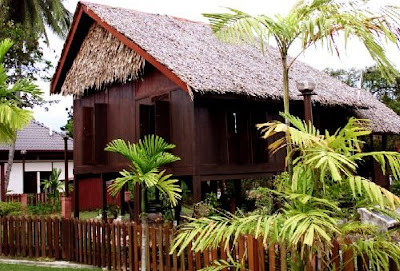Widely known as the Pearl of the Orient, Penang is one of Asia's most famous islands. Its natural beauty and exotic heritage have been attracting curious visitors for centuries.
Penang, although a small island, has no shortage of cultural sights and natural scenery to amaze you.
From walking along the sandy beaches of Tanjung Bungah to admiring the landscape from the summit of Penang Hill and playing with vipers in Snake Temple to shopping for merchandise in Georgetown, you'll never get bored on this island!
The Malay actor P. Ramlee was the most famous actor of his time in Malaysia. This was his residence during his career in the 1930-40s.
Inside, visitors can view his memorabilia and other articles related to his acting and biography. All furnishings have been carefully preserved to maintain the house as it originally was when it was used by P. Ramlee.
Yet another Buddhist temple, the Wat houses a reclining Buddha statue that is the third largest of its kind in the world - 33 meters in length.
On the temple grounds, there are many Buddhist sculptures as well. The temple was built by a Thai monk in 1845, who had a penchant for Penang's Asam Laksa.
The Penang Museum was built in 1965 and houses a collection of priceless artefacts and state treasures. Eight of the ten original oil paintings by the famous artist Captain Robert Smith are found here.
Other items on display include porcelain, furniture, jewellery and costumes from past historical eras. There are also maps, charts and memorabilia used by the first Prime Minister of Malaysia, Tunku Abdul Rahman.
Saint George Church is the oldest Anglican Church in Malaysia which still holds regular services every Sunday.
Built in 1818 by convicts, the church has a memorial dedicated to Francis Light sitting in front.
The Gurney Drive is a fantastic place to catch a view of the sunset - and eat at hawkers stalls.
Most of Penang's glorious food can be ordered from the hawker stalls in the area, from Assam Laksa to Popiah and Char Keow Teow to Hokkien Mee.
Many families also come here to picnic on weekends and during the night, a bazaar selling all types of goods comes alive in Gurney Drive.
The Clock Tower is a colonial reminder from the era of the British Empire in Penang.
Built to commemorate the Diamond Jubilee of Queen Victoria in 1897, the Clock Tower was a gift to the British authorities from a local millionaire, Cheah Chen Eok.
Moorish stylings dominate the structure and from afar, it resembles the minaret of a mosque.
The house was built and named after a Hakka migrant in 1890. He was born a penniless person but eventually became the most powerful overseas Chinese merchant of his time in Nanyang. Moving to Penang, he continued to build his empire of shipping, opium and mining in Southeast Asia.
The house is a magnificent architectural marvel with distinct European styling and stained-glass windows. Today, the house is open for visitors to learn more about Cheong's history through antiques and paraphernalia displayed in the building.








